#Cereal Ingredients Market
Text
Cereal Ingredients Market revenue is expected to grow at through 2022 to 2029, reaching nearly USD 466.19 Mn.
0 notes
Link
Cereal Ingredients Market size is estimated to reach $589.1 Million by 2025, growing at a CAGR of 3.39% during the forecast period 2020-2025. Cereal is a small, edible and starchy seed, used as food. Cereal grains are rich in vitamins, minerals, proteins, and fats.
0 notes
Text
Cereal Ingredients Market Growth, Overview with Detailed Analysis 2022-2028
Cereal Ingredients Market Growth, Overview with Detailed Analysis 2022-2028
The Cereal Ingredients Market research report 2022-2030 provides an in-depth analysis of the changing trends, opportunities, and challenges influencing the growth over the next decade. The study includes a detailed summary of each market along with data related to demand, supply and distribution. The report examines Cereal Ingredients market growth strategies adopted by leading manufacturers…
View On WordPress
#Cereal Ingredients#Cereal Ingredients forecast#Cereal Ingredients Industry#Cereal Ingredients Market#Cereal Ingredients price#Cereal Ingredients report#Cereal Ingredients research#Cereal Ingredients share#Cereal Ingredients trends#Covid-19 Impact Analysis
0 notes
Text
storytime!!! so basically im going through a mini writer's block right now so i started cooking to get my mind off it and now all i can think about is cooking with ino takuma
wc: 0.8k
contains: pure fluff and nanami's here too i guess, reader is referred to as girlfriend, modern au
author's note: fun fact! so i lost most of this and i had to rewrite all of the parts i lost and when i found out i actually started to cry! but i hope yall like it!
inbox open for requests + qna questions + anything and everything

first off, i firmly believe this guy is the most mediocre chef EVER. you cannot convince me otherwise. however!, i will give him his props. he can cook his cute lil suspiciously scrumptious dishes when he has the time but that does not stop him from trying to get better at cooking
once you two started dating, he without a doubt begun brushing up on his skills. he went from being able to make a "banger sandwich" to a "banger le poulet frit et les gaufres" which was just chicken and waffles but he's trying okay!!!
he definitely consulted (begged) head chef nanami, as he called him in this situation, to help with his culinary skills. and i'm not talking regular begged, i'm talking groveling at his feet, begged. and nanami obliged, teaching ino how to cook, starting at the very basics, the importance of mise en place: the practice of organizing and preparing your ingredients and equipment before starting to cook
soon enough, ino's culinary lessons with head chef nanami blossomed. he started from basically nothing and now he's mastered the perfect milk to cereal ratio and a near perfect filet mignon. did he know what that was? no. did he watch nanami make it under the excuse of watching is the best form of learning? yes.
but you have to start somewhere! and you have to give him his tens!! he did light the stove and he preheat the oven. he's practically a chef already! and all that watching definitely paid off
"here, try this recipe with your girlfriend." nanami slid a slip of paper over to ino, tiny, uniform inked words on it. "and here is your copy, good luck." an identical piece of paper was given to ino again but it had handwritten notes like pay attention to the flame and i wouldn't recommend substituting this ingredient, it is very vital for the overall taste of the dish
so here you both were in the kitchen, aprons on and eyes peering at the recipe. "step one," takuma started, tightening his apron like he was about to do some serious work. he lifted up a comically large pot and placed it on the stove, pulling out (and flaunting) the crabs he handpicked from the market right after. "get your pot and your crabs."
"step two," you filled the pot halfway with water, sprinkling in a bit of salt and lighting the fire underneath it. "bring your pot of water to a rapid boil."
"what're you doing babe?" your words were clearly a question though it was one that you could answer simply by looking. "i'm paying attention to the flame." takuma pulled your shoulder flush to his, eyes still watching the blue flame with intent and unwavering focus. "i don't think it's going anywhere but okay."
once the water bubbled up violently, ino threw in the crabs and you went to the bathroom to freshen up. you were humming a sweet song while drying your hands when the all too familiar shrill scream of your boyfriend pierced your ears. "takuma?!" you called out, running to the kitchen, hands an uncomfortable damp. and there he was. takuma had the pot lid propped up as if it were a shield, tears pricking his eyes, "baby...", he called out to you. "the crab... it jumped out of the pot..."
"you bought live crabs...?"
"they weren't moving when i bought them."
"ah."
grabbing some nearby tongs, you placed the crab back into the salted water, "wait..., shouldn't we kill them first?" ino slowly nodded, pulling his phone from his pocket, "let's see... wikihow... how to cook a crab..."
"freeze the crabs?!" your in-sync voices rang through your house, bouncing off the walls. "we're not freezing any crabs." you continued, confusion and sass dripping from your lips. "damn right we're not! but, uh, how're we supposed to kill them then?" gulping at your boyfriend's question, you thought for a bit
tugging at one of the drawers, a collection of knives, given to you both by nanami, were revealed. picking the biggest one up and holding it's handle firm and tightly. "surely we could just," the blade sliced through the air, mimicking the swift movement of killing a crab. takuma shook in his place, "hey, queen, you should, uh, watch where you're swinging that. you might hurt yourself," he came closer to you, fingers squeezing and squishing your cheeks. "and then i would have to nurse my pretty girlfriend back to health!"
slapping his hands away playfully, you sighed, "babe, focus! what're we gonna do? i don't wanna kill the crabs..." ino put his hands on his hips, a triumphant smile on his face, "don't worry, i got this."
long story short, he did not.
"oh my god." the plastic fork slipped from takuma's hands clanking against the matching plastic container of takeout
"what?"
"we didn't do mise en place."

jjk taglist
@blendingcaramal @gzchaos @theamazingrain @woah-girlz @voloslobotomyservice
@kyozvy @obessionofagrl @bubybubsters @gojosbrat @raindropsonrwses
@c-moon20-12 @saltynanobeanie @theamazingrain @synthiiiiis @ghostlyluminarycloud
@poopyyy @supernatrualqueen @bxrbie-jadeee @lailuv21
#— ❀ rieamena writes!#rieamena#riea#jjk#jjk x reader#jjk ino#ino x reader#ino x black reader#jjk x black reader#ino fluff#ino takuma#takuma ino#takuma ino x reader#takuma ino x black reader#ino x you#takuma ino fluff#ino hcs#ino takuma x reader#ino smut#jujutsu kaisen#jujutsu ino#jujutsu kaisen x reader#jujusu kaisen x black reader#jujutsu kaisen imagines#jujutsu kaisen ino#jjk ino takuma#jjk ino x reader#ino takuma fluff#ino takuma jjk
170 notes
·
View notes
Text
The Great Cooking Disaster
Person A: Hey, remember when I thought I could cook a gourmet meal last weekend? 😂
Person B: Oh no, what happened? Did you end up ordering pizza again?
Person A: Close! I tried making homemade pasta from scratch. I watched this super fancy video, and I felt like a chef!
Person B: Ooo, fancy! How did that go?
Person A: Step one: Gather ingredients. I somehow turned “a pinch of salt” into an entire salt shaker. My dough tasted like it was seasoned by a pirate. 🧂🏴☠️
Person B: LOL! That’s one way to make it “salty.” What happened next?
Person A: Kneading the dough. The chef made it look like a dance. I looked like an octopus trying to play Twister!
Person B: I wish I could’ve seen that! Did you at least roll it out well?
Person A: If by "well" you mean “floppy pancake,” then yes! I think I invented a new pasta shape: floppy-roni. 😂
Person B: Floppy-roni? That sounds like a new dish at a bad diner! How did it taste?
Person A: Well, after boiling it, I left the kitchen for a second. Came back to a bubbling monster that looked like it was trying to escape the pot!
Person B: You’re kidding! Did you at least salvage it?
Person A: I served it with a straight face, calling it “Chaos Pasta.” My family tried to hold back laughter while eating it.
Person B: That’s a solid family memory! “Chaos Pasta” could be a hit if you market it right. 😆
Person A: Next time, I’m sticking to cereal. Less chaos, more success! 🥣
8 notes
·
View notes
Text
the isekai thing where,
Hey this post is too long and i'm not fuckin editing down my stream of consciousness tumblr post because it's dumb anyway.
, because of weird inscrutable genre stuff, the protagonist often can't just be The Strongest Person In The World or like recruit all the strongest people into their party or learn magic or something, or use modern medicine to save lives or whatever, they need to also like. Be a business owner. and they can't just like- like, they always Invent Soap (Note: Soap existed already) or whatever, and to be fair, inventing the bessemer process is often a pretty good one.
but no they also need to be like, importing japanese cultural products (sometimes korean! when it's a korean one. duh.) to the fantasy world, which are universally beloved because obviously japanese cultural products are great and applicable everywhere. like, every medieval noble wants to wear a yukata. and like, they can never just have one business either, they have to do like 20 things and each member of their cast has their own subsidiary business (which lets you get rid of some of the cast members because theyre successfully doing their own thing, i guess). but like okay yknow. one of the ones they *always* want to do, because food is such a big thing for culture, is open a restaurant. and it's like, guys, the economics on this are insane.
(First off, this was prompted by the summer 'when a book is set in year A and written in year B and the author refers to X dollars, do they mean X dollars in year A or are they automatically translating to the equivalent year B monetary value' which presumably is talking about real life stuff)
but like dude, when these fuckin isekai protagonists open a fast food restaurant and they bill it as 'the genius idea is that we'll sell to the lower class and get a bigger market' like. first off, they had restaurants or similar equivalents back then. like, thats part of what the tavern was for. and the wealthy people could afford to just have chefs on retainer. but secondly, those peasants are not paying extra for your insanely expensive spices on your Japanese Ramen or Korean Fried Chicken In Medieval Europe. like the protagonist always has to find how some rare plant or monster part tastes exactly like the right ingredient they were missing and they're like, oh FINALLY i can eat some of the cuisine i've been missing. and then they open a restaurant.
and it's like no go back a second this shit was rare as hell you can't sell that to poor people. like dude that medieval milk soup (btw. Whats up with that. Max Miller made a video on one that was like, essentially the milk from your bowl of cereal where it was full of cinnamon and sugar. but he mentioned that there were actually savory milk soups with meat and vegetables in it, and he just isnt doing one of those. And that's like, obviously the more interesting one, and is the one you see in some of those isekai that makes you go What The Fuck Is That? Like for real what was in that. Whats up with the milk soup) was cheap as fuck. like the cows just make the milk. and like bread is bread. like the food isnt gonna be total dog shit, it's still fresh food, they have some herbs and spices just not *all* of the ones we have, the maillaird reaction still works the same. you got eggs, mushrooms, butter or animal fat. missing some veggies because you havent made contact with south america (although. i mean it's fantasy you can make it up. but they never make the thing they use to make the pseudo-japanese/korean food a super common ingredient because then it would already be in use and the protagonist wouldnt be like craving for a taste of home and then inventing a new cuisine and being super smart and innovative)
Anyway thats that but the other thing is it's insane when a story forgets to do the copper-silver-gold thing and peasants are spending like 20 gold pieces on some Fantasy Meat Skewers or w/e. like you find a treasure chest full of golden ingots and you're like holy shit we're rich but each ingot is only like a hundred sandwiches. (although admittedly i feel like copper still had to be like. pretty expensive back then right? like silver for sure, it seems insane for 10 copper coins to be worth a silver coin, but it also feels insane that you would buy a beer for multiple pieces of like metal that was taken out of the earth and refined from ore and melted into a coin. I guess they didnt have wiring so the value was probably lower)
the main thing though is why the hell are all the isekai protagonists opening like 7 small businesses. thats weird man. they should just be stabbing dragons or whatever why are they like opening a massage parlor. anyone can do that. the comparative advantage is horrible
3 notes
·
View notes
Text
@bigidiotenergy. peter quill.

SHE sets the plate before him. A meal fit for royalty in her book. Fresh tortillas, all the ingredients for tacos de camarones y al pastor, fresh pineapple she had picked out herself from market. She recognizes that he's trying to discover his own new normal, just as much as she. He's only just returned to Earth, begun an honest life, and she should probably be in school - though if the Avengers had their way she'd probably be under lock and key -- or a microscope. Laura shutters at the thought.
She sits across from him, arms folded, waiting for him to take a bite. "You need to eat. Not just that cereal crap. Something with substance." Laura instigates, and insists. "Go on."

#* i set after gotg3. hope that's ok. trying somethin' out. xo#bigidiotenergy#;threads#( peter quill y laura / bigidiotenergy. )
2 notes
·
View notes
Text
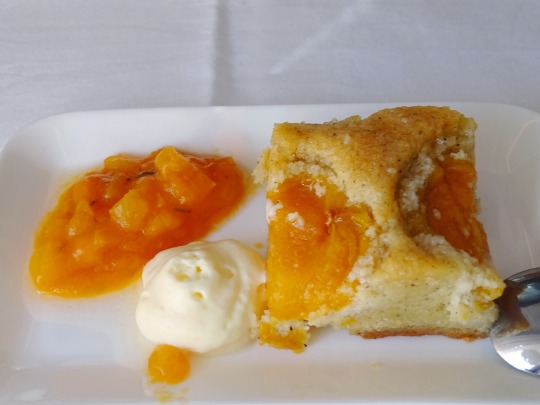
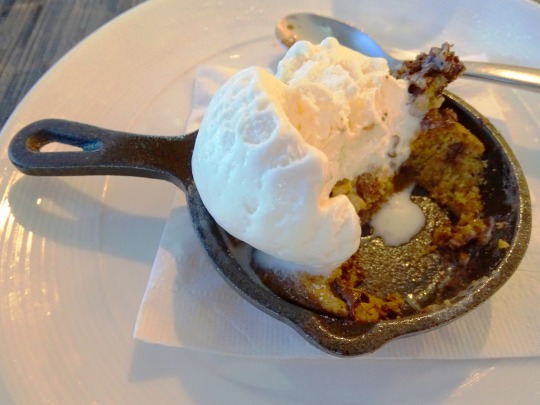
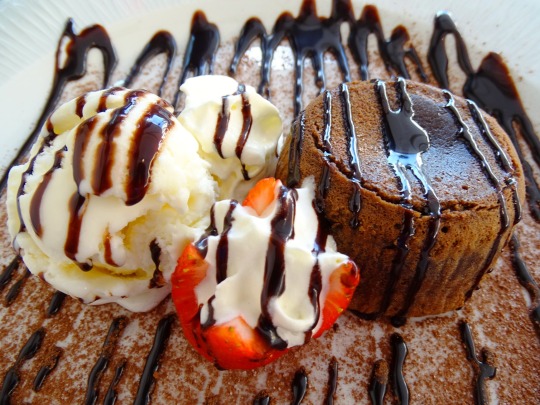
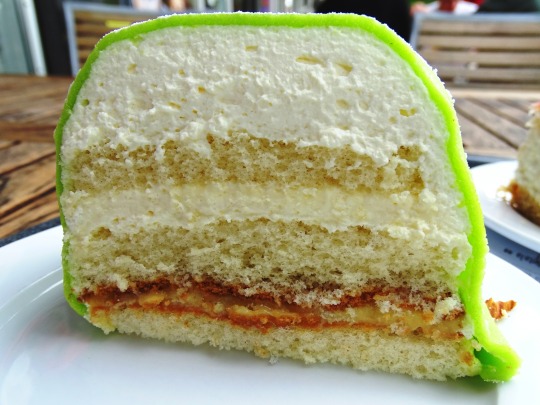
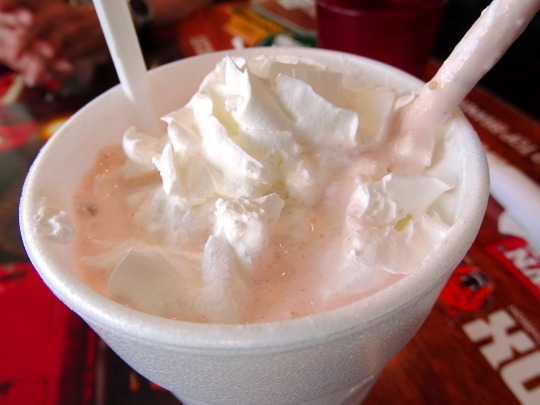





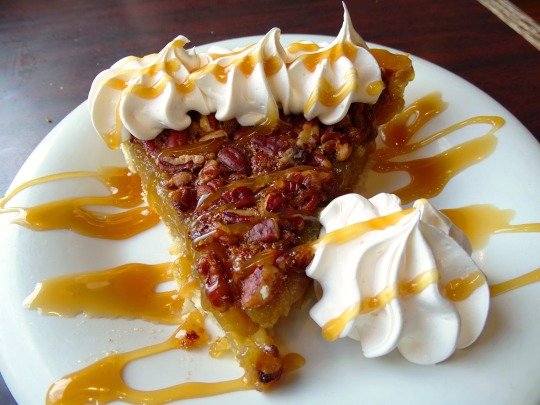
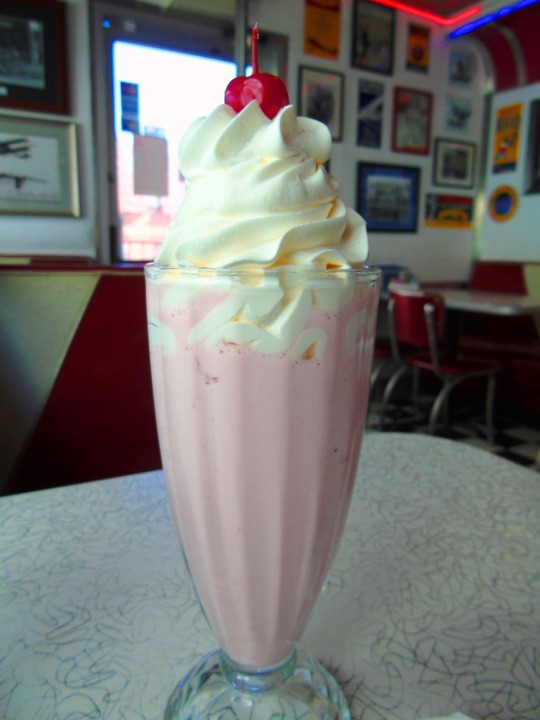

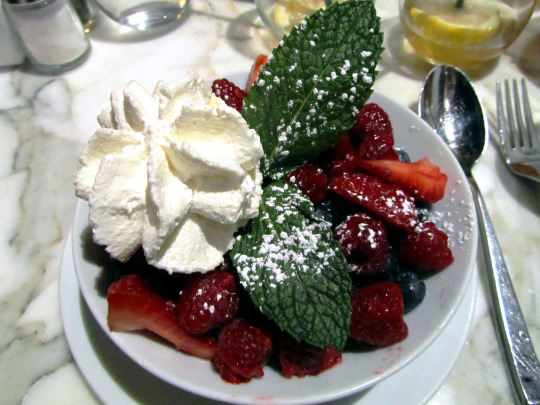
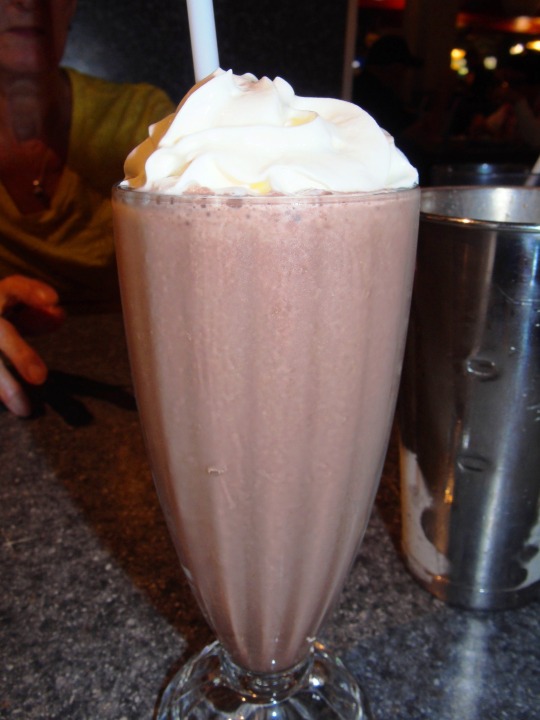

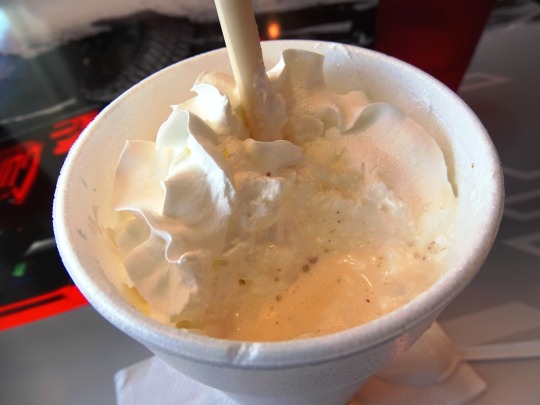


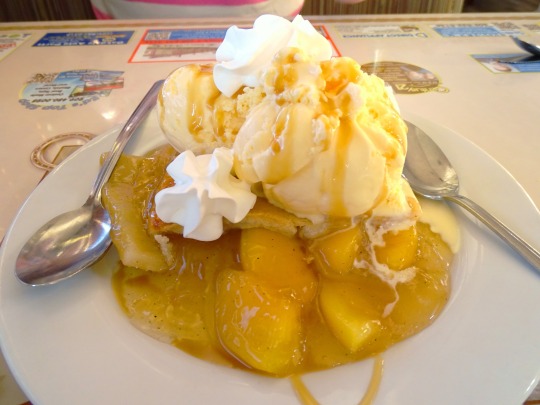
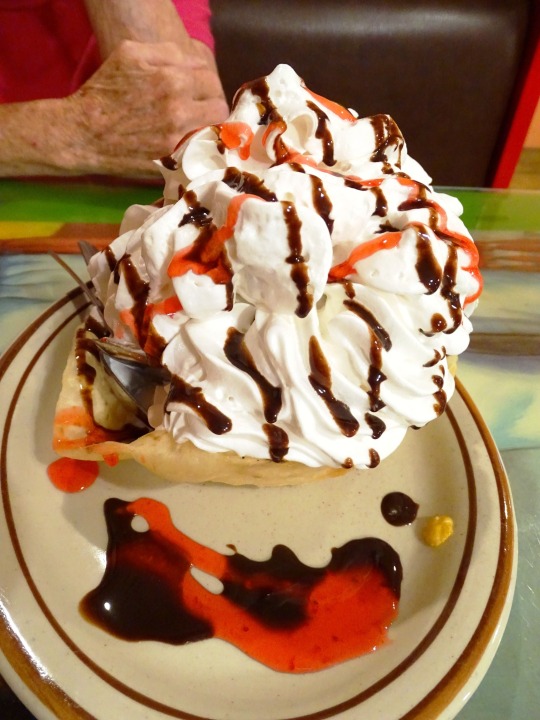
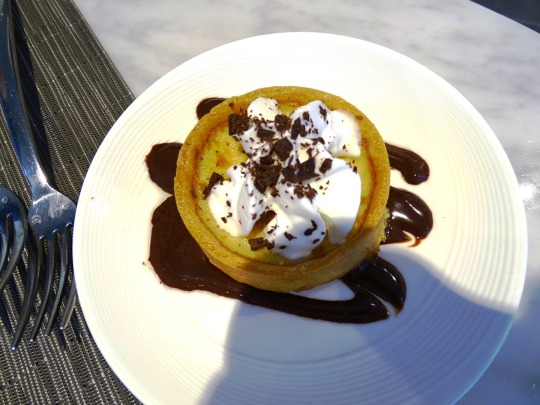
World Milk Day
Start your day with a glass of calcium-rich milk, visit a local dairy farm, or see what milk alternatives like soy, oat, or almond milk you might enjoy.
It’s a well-known fact that milk is rich with calcium, a mineral that promotes healthy teeth and bones. June 1st is the date that has been set aside to celebrate Milk Day. And, of course, this is a celebration that can take place anywhere in the world, given that milk is a global food!
The use of milk in food and drink has been happening for thousands of years. As most people can appreciate, milk is an integral part of most people’s daily lives, and there’s an entire industry that revolves around it as well.
Milk is a liquid food rich with nutrients like calcium. It’s a food product that is primarily used by mammals during infancy. Although, in the case of humans, people tend to consume it in adulthood, as most adult humans can digest the lactose in milk.
Of course, milk isn’t only available for drinking. It’s an essential ingredient for dairy foods such as butter, cream, ice cream, and cheese. Milk can also be found as an ingredient used in other types of foods, such as bread, cakes, cereal, desserts and so much more.
There is no denying that milk has become a mainstay of most people’s diets today. It’s also one of the cheapest food products to buy, given the industrial scale of milk production in the world. Some of the largest producers of milk are the United States, India, and China.
History of Milk Day
Milk Day became a globally celebrated event on June 1st, 2001. The global celebration, in general, can be traced back to the United Nations (UN). In particular, the FAO (Food and Agriculture Organization) of the UN has been responsible for organizing and marketing World Milk Day throughout the globe.
More than two decades ago, the FAO proposed a global Milk Day to recognize the importance of milk and the role that it plays in our world. In addition, this day was also created to provide direct focus to the milk industry and publicize the various activities connected with it. In fact, the dairy industry supports the livelihoods of approximately 1 billion people throughout the world!
But even before this day was created in 2001, Milk Day was celebrated by some other nations throughout history. In the British Isles, for example, a Milk Day celebration (“Imbolc” – Celtic for “milk”) took place in the pre-Christian era.
Considering the fact that over six billion people worldwide consume milk and dairy, it’s no surprise there was a need to celebrate this healthy, delicious beverage!
How to Celebrate Milk Day
June 1st is a day that many people may want to write their diaries. Milk plays such a significant role in the world that should certainly be celebrated in style!
But what can be done to celebrate such a momentous occasion? Try out some of these ideas for enjoying Milk Day:
Get the Day Started with a Glass of Milk
Why not celebrate today with a glass of fresh, cold milk in the morning to kick-start the day?! But don’t stop there. How about enjoying a big bowl of cereal full of delicious milk?
Of course, after drinking that glass of milk, don’t forget to snap a photo of that beautiful milk mustache! Share it with the world on social media to remind everyone else to enjoy Milk Day too.
Join an Official Milk Day Celebration
As a worldwide event, Milk Day comes with all kinds of official opportunities to celebrate! In 2020, more than 400 Milk Day campaigns took place in over 68 countries all over the globe, so there should be plenty to join in with again this year. Here are some events that have taken place in previous years:
World Milk Day Milk Donation. Happening in New York State, USA, several organizations have gotten together to provide a free gallon of milk to the people in their local community who visit a dairy farm.
Live Recipes by Renowned Chefs from Around the World. This live Facebook event has been hosted by Amul, India, which is the country’s largest dairy brand, with the intention of showing the importance of milk throughout different countries and cultures.
International Dairy Federation Raise a Glass Event. Hosted by the IDF in Brussels, Belgium, this event involved hosting a toast to milk from people all around the world.
Check the World Milk Day website to get access to all the needed information to make plans for this day.
Visit a Local Dairy or Farm
For those who have some extra time, especially those with kids who are ready to learn, consider visiting a local dairy to learn the process of milking cows and collecting the milk. This will also lead to learning about pasteurizing and homogenizing milk, methods used to filter milk and keep it long-lasting.
If there are no cow farms nearby, consider visiting a smaller farm that has goats. It’s still possible to learn about everything milk-oriented but may be more accessible because they might be smaller and locally owned.
Enjoy Other Milk Products
For lunch, why not have a mozzarella or Margherita pizza and drink a glass of chocolate milk to wash it down? After that, those who are still feeling hungry could always have some delicious ice cream for dessert!
Other options for enjoying milk products on this day (and every day!) include yogurt, sour cream, butter, custard, cream and all of the recipes that can be made from them.
Try a Milk Alternative
For folks who have trouble digesting dairy easily, why not try other non-dairy milk alternatives? Here are some popular options:
Soy Milk. A favorite as one of the early milk alternatives, this one is made from soybean plants that grow fairly prolifically in many places.
Almond Milk. Made by crushing almonds and blending them with water, and then straining out the mix to remove any solids that are left, this nutty milk is filled with protein.
Coconut Milk. This one uses the white, fleshy part of the coconut, grating it and soaking it in water. The cream rises and is skimmed off, then what’s left is strained to extract the coconut milk.
Whether with a milk product or a dairy alternative, celebrating World Milk Day can be loads of fun!
Source
#chocolate cake#Rice pudding with cinnamon#flan de huevo#Pudim flan#Crème caramel#chocolate pie#whipped cream#dessert#Spain#travel#original photography#summer 2021#vacation#World Milk Day#1 June#WorldMilkDay#Princess cake#Strawberry Shortbread#USA#Strawberry Milkshake#Chocolate Banana Milkshake#Berries&Cream#Coconut Cream Pie#Banana Cream Pie#Strawberry Cheesecake Milkshake#Pecan Praline Milkshake#food#restaurant#Coconut Cream Pie Cheesecake#Pecan Pie
2 notes
·
View notes
Text
Healthy and Delicious: The Best Vegan Food Products for Your Diet
Embracing a vegan diet doesn't mean sacrificing flavor or nutrition. In fact, there is a vast array of Vegan Food Products on the market that are not only healthy but also incredibly delicious. Whether you're a seasoned vegan looking to spice up your meals or a newcomer exploring plant-based options, these top Vegan Products are sure to satisfy your taste buds and nourish your body.

1. Plant-Based Milks
Ditching dairy milk has never been easier with the wide selection of plant-based milks available. Options like almond, soy, oat, and coconut milk offer creamy textures and rich flavors that are perfect for pouring over cereal, blending into smoothies, or frothing for lattes.
2. Vegan Protein Sources
Protein is essential for building and repairing tissues, and vegan options are abundant. Tofu, tempeh, seitan, and legumes such as beans, lentils, and chickpeas are versatile protein sources that can be grilled, stir-fried, or baked into savory dishes.
3. Nut Butters
Nut butters like almond butter, peanut butter, and cashew butter are not only delicious but also packed with healthy fats, protein, and fiber. Spread them on toast, drizzle them over oatmeal, or use them as a dip for fruits and vegetables.
4. Whole Grains
Incorporating whole grains into your diet provides essential nutrients and sustained energy. Quinoa, brown rice, barley, and bulgur are just a few options that can be used as the base for grain bowls, salads, or side dishes.
5. Vegan Cheese
Say goodbye to bland salads and sandwiches with the wide variety of vegan cheeses available. From creamy cashew cheese to melty plant-based mozzarella, vegan cheeses add depth and richness to your favorite dishes without the need for dairy.
6. Plant-Based Meat Alternatives
Gone are the days of bland veggie burgers and tofu dogs. Today's plant-based meat alternatives are so convincing that even carnivores won't miss the real thing. Whether you're craving burgers, sausages, or meatballs, there's a vegan option for every palate.
7. Dairy-Free Yogurt
Creamy, tangy, and probiotic-rich, dairy-free yogurt is a staple in many vegan diets. Made from soy, coconut, almond, or cashew milk, vegan yogurts are perfect for breakfast bowls, smoothies, or enjoying on their own with fresh fruit and granola.
8. Vegan Desserts
Indulging in sweet treats doesn't have to derail your vegan lifestyle. From decadent chocolate cakes to creamy coconut ice cream, there are plenty of vegan dessert options to satisfy your sweet tooth guilt-free.
9. Plant-Based Snacks
When hunger strikes between meals, reach for plant-based snacks that are both satisfying and nutritious. Roasted chickpeas, veggie chips, trail mix, and fruit and nut bars are convenient options that provide a quick energy boost.
10. Vegan Frozen Meals
For busy days when cooking from scratch isn't an option, vegan frozen meals offer a convenient and delicious alternative. With options ranging from veggie-packed stir-fries to hearty bean chili, there's a frozen meal for every craving and dietary preference.
11. Plant-Based Spreads and Dips
Elevate your sandwiches and snacks with flavorful plant-based spreads and dips. Hummus, guacamole, pesto, and tahini are just a few options that add richness and depth to your meals while providing essential nutrients.
12. Non-Dairy Ice Cream
Cool off on hot days with creamy and indulgent non-dairy ice cream. Made from coconut, almond, soy, or cashew milk, vegan ice cream comes in a variety of flavors, from classic vanilla and chocolate to innovative options like salted caramel and cookie dough.
13. Vegan Baking Ingredients
Baking without eggs and dairy is easy with the wide range of vegan baking ingredients available. Replace eggs with flaxseed or chia seed "eggs," use plant-based milk and yogurt as substitutes for dairy, and opt for vegan chocolate chips and cocoa powder for your sweet treats.
14. Meat-Free Burgers and Sausages
Fire up the grill and enjoy meat-free burgers and sausages that are packed with flavor and protein. Made from ingredients like black beans, mushrooms, quinoa, and spices, these plant-based alternatives are perfect for summer barbecues and cookouts.
15. Vegan Ready-Made Meals
When you're short on time or energy, vegan ready-made meals are a convenient option for satisfying hunger without compromising on taste or nutrition. Look for options like frozen burritos, veggie burgers, and pre-packaged salads for quick and easy meals on the go.
16. Dairy-Free Cheese Alternatives
Expand your culinary repertoire with dairy-free cheese alternatives that melt, stretch, and crumble just like the real thing. Whether you're making pizza, nachos, or cheese platters, vegan cheese adds richness and flavor to your favorite dishes.
17. Vegan Condiments and Dressings
Enhance the flavor of your meals with vegan condiments and dressings that are free from animal products and artificial additives. From tangy barbecue sauce and spicy sriracha to creamy ranch and balsamic vinaigrette, there's a vegan option for every taste preference.
18. Plant-Based Beverages
Quench your thirst with refreshing plant-based beverages that are packed with vitamins, minerals, and antioxidants. Coconut water, herbal teas, fruit-infused water, and sparkling water are hydrating options that provide a welcome break from sugary sodas and juices.
19. Vegan Breakfast Foods
Start your day off right with nutritious and satisfying vegan breakfast foods. Overnight oats, chia seed pudding, tofu scramble, and avocado toast are delicious options that provide a good balance of protein, fiber, and healthy fats to keep you energized throughout the morning.
20. Meat-Free Deli Slices
Create delicious sandwiches and wraps with meat-free deli slices made from plant-based ingredients like seitan, tofu, and mushrooms. Whether you prefer smoky tempeh bacon, peppery vegan pepperoni, or classic deli-style slices, there's a vegan option to suit your taste buds.
Conclusion
With the abundance of delicious and nutritious vegan food available, adopting a plant-based diet has never been more enjoyable. From plant-based milks and protein sources to dairy-free yogurts and indulgent desserts, there's something for everyone to love. By incorporating these top vegan food products into your diet, you can enjoy the benefits of plant-based eating while satisfying your taste buds and nourishing your body.
With these additional vegan food products, you'll have even more options to explore and enjoy as you embark on your plant-based journey. From breakfast to dessert and everything in between, vegan eating has never been more delicious or satisfying.
More information about vezlay foods:
Name: Vezlay Foods
Phone No: 7011736463
Address: A1/1, Nathu Colony Chowk Shahdara, New Delhi - 110093, INDIA
Website: https://vezlay.com/blog/list-of-vegan-food-products-in-india/
3 notes
·
View notes
Text


༘˚⋆𐙚。⋆𖦹.✧˚"Beauty Product Manufacturers and Eco-Friendly Cosmetics”༘˚⋆𐙚。⋆𖦹.✧˚
Hi beautes! 👋🏻 🎀. I want to share one of my opinions and research from what I found that Beauty Product Manufacturers and Eco-Friendly Cosmetics” are really important. Skin irritation and allergic responses are less common with natural and oleochemical substances. Sustainable products are made from naturally occurring substances that humans have been utilizing for centuries: plants and animals. These ingredients have therapeutic qualities and are free of synthetic, poisonous chemicals and artificial colors. Take glycerine, an organic byproduct of palm oil. Cosmetics, medications, and soaps all employ the clear, non-toxic liquid. Glycerine retains moisture well since it is a humectant, which makes it a great moisturizer. By enhancing the body's hygroscopic properties, glycerine helps the skin to absorb and retain water. It can be put anywhere on the body because it doesn't cause irritation. It works well as an anti-aging component.
Because The average Asian or American is thought to use 100 kilos of plastic every year, with over half of the plastic generated going toward single-use disposable products. Typical suppliers of environmentally friendly cosmetics include: Natural oils, including avocado, coconut, and olive oils. Plants used in agriculture, such soybeans and corn. Environmentally friendly formulas are the foundation of eco-friendly cosmetics, which are then produced and packaged using eco-friendly procedures. Ingredients that are made from natural substances are used in the creation of these "green," sustainable cosmetics. Eco-friendly beauty products can be an excellent choice for people with sensitive skin since, in addition to being good for the environment, they are typically made of natural and organic ingredients.
Additionally, harsh chemicals are likely to be absent from eco-friendly cosmetics, which lowers your chance of skin damage and flare-ups. Harsh chemicals are also probably not included in eco-friendly cosmetics, which lowers our chance of skin damage and flare-ups. Consumers nowadays are more concerned with social and environmental responsibilities and have a developing global consciousness. The softer environmental impact of sustainable products is one of their key advantages. There are new reports every week about massive garbage floating in the water or risky carbon outputs. Conventional cosmetics include several dangerous substances called petrochemicals that harm both our bodies and the environment. Customers seek organic, low-polluting items as we grow more conscious of the environment. How are we gonna make the world change? so here’s the tip that you should know:
1. Recognizing Ecological Natural beauty
The following are a few of the most well-known, eco-friendly, sustainable cosmetic brands and their offerings: Native:
-Native uses natural, organic components to make its deodorants. Native's brand is based on "easy-to-understand, nontoxic ingredients." Herbs like castor bean oil, coconut oil, and shea butter are generated from oleochemicals.
-Burt's Bees: From modest beeswax candles to a massive empire of lip products, Burt's Bees has emerged as a global pioneer in sustainability. The company uses natural and organic components in its cosmetics and personal care products, and it follows a "no-waste" manufacturing philosophy. They use beeswax, herbs, and botanical oils to create their well-known goods.
- Blissoma: Specializing in skincare, Blissoma provides a vast selection of green skincare products divided by skin type and need. Their preservative-free cosmetics use natural components such as fruit enzymes, Vitamin C, organic herbs, and cereals.
The job Manufacturers of cosmetics have a rare chance to emphasize corporate responsibility by focusing on green cosmetics. Going above and beyond with sustainable sourcing or packaging can have a big influence, in addition to the good effects green marketing can have on a company's image. A business assumes responsibility for its effects on economies and world health when it ramps up its sustainability initiatives. A company can earn authority and respect from suppliers, customers, and other distribution chain participants by assuming corporate responsibility for its manufacturing.
2. The Effect of Modern Beauty Products on the Environment
The Intensity of Resources and Waste Production: - Sourcing of Ingredients: Resource-intensive procedures are a major part of the manufacturing of traditional cosmetics. One such component that contributes to habitat loss and deforestation is palm oil, which is widely used in cosmetics.Packaging Waste: Take into consideration the chic plastic cases that hold your go-to lipstick or moisturizer. A major contributing factor to the worldwide plastic pollution problem is that these containers frequently wind up in landfills or the ocean.
Toxic ingredients included in many traditional cosmetic products, including parabens, phthalates, and formaldehyde-releasing preservatives, contribute to chemical pollution and water contamination. In addition to endangering human health, these pollutants contaminate rivers. Ecosystems that are aquatic are impacted by the chemicals we rinse out of our hair or wash off our makeup, which ends up in rivers and oceans. - Tiny plastics: Small plastic particles called microplastics are present in toothpaste, exfoliating scrubs, and some shampoos. These particles are non-biodegradable. Microplastics can harm marine life and possibly make their way into our food chain when they amass in water bodies. Part 3: Greenhouse Gases and Climate Change - Distribution and Transportation: Cosmetics are produced all over the world and distributed extensively. Storage of some goods (such serums) in a refrigerator also adds to the energy usage.
For example: Parabens. - Toxic Substance: Preservatives including methylparaben, ethylparaben, and propylparaben are frequently found in skincare and makeup products. On the other hand, they may increase the risk of breast cancer and cause hormone imbalance. - Alternative: Look for natural preservatives like vitamin E, rosemary oil, or grapefruit seed extract, or choose items that are labeled "paraben-free".
3. Producing Your Own Eco-Friendly Items
Do-it-yourself Beauty Recipes: - For a calming and purifying effect, mix oatmeal, honey, and chamomile tea to make a mild face cleanser. For a luscious and nourishing treat, combine shea and cocoa butter with your preferred essential oils to create a moisturizing body butter. Shake some lemon or orange peels into some apple cider vinegar to create a revitalizing and pleasant citrus hair rinse. Sustainable Packaging Options: To cut down on plastic waste, put your homemade beauty products in reusable glass jars or metal tins. Take into consideration giving empty containers from completed commercial cosmetic items a new lease on life.
Be healthy always, love 🎀🪞🩰🦢🕯️
#cosmetics#ecofriendly#beauty products#natural ingredients#makeup#happy girls#woman#ecosystem#costumer#buying#green#team green
3 notes
·
View notes
Note
Wait you’re from the UK right? Genuine question, is it true you guys have like, an “american snacks” section in your grocery stores? Or something like “american core”?
LMAOO kinda!! , we have international or world food aisles in super markets where you can get drinks, food and ingredients from different countries bc the UK is pretty diverse id say - there is like a smol l American bit in most stores for like UK versions of american cereals or sweets (candy) cause we’re not allowed all the additives n stuff the US has l😭
13 notes
·
View notes
Text
I don't want to find out anything about the cult that most likely creates this product based on this packaging but I'm very excited to have these ingredients.
Its been super difficult to find affordable organic, stripped down multigrain cereal like this to use in my multi grain bread

I'm hoping when the farmers market opens we will have other options
2 notes
·
View notes
Text
A Vegan Guide to Dairy Alternatives
Dairy is one of the hardest and the best things to give up on. Milk and other dairy items are the top wellsprings of saturated fat adding to heart disease, type 2 diabetes, and Alzheimer's infection. Studies have likewise connected dairy to an expanded risk of breast, ovarian, and prostate cancers. If you’re ready to ditch dairy, then I have carved the best alternatives for you that will not only savor your taste buds but also bring warmth to your heart.
Say Hi to your new ultimate comfort foods.
Soy Milk
Soy Milk is enriched with protein. It is one of the most popular non-dairy milk of choice and is available at most grocery stores, coffee shops, and even restaurants around the country. It is perfect for people who are lactose intolerant. It is thick, creamy, and has a subtle flavor that makes it the perfect replacement. It is power-packed with Omega-3 fatty acids, which are healthy fats that the body can’t develop on its own. On top of it, it reduces the risk of dementia and Alzheimer's disease.
Quick Tip: When mixed with vinegar, soy milk curdles into a delicious "buttermilk" alternative which is great for muffins, pancakes, and quick bread.
Cashew Milk
Next comes the cashew milk. Cashew milk has a fine, creamy texture, almost flavorless, making it more similar to cow’s milk. It is relatively harder to find in the stores but you can easily find it in large grocery stores or bakeries.
Quick Tip: It is great for the base of custards and ice creams as well as for drinking. You can also enjoy it with oatmeal or cereal.
Oat Milk
It is derived from oat grains making it one of the healthiest plant-based milk. It has a creamy texture and has an oatmeal-like flavor. You can taste a variety of them such as Sweetened, Unsweetened, Vanilla, or Chocolate. It is one of the leading allergy-friendly milk. It can easily be made at home with 4 ingredients in under five minutes. Thinking of wasting five minutes a day, try cooking.
Quick Tip: It blends well with cookies, oatmeal's. Hence, it is relatively less desirable to drink and cook.
Almond Milk
Almond milk is one of the best and most popular replacements. You can easily find it next to your home. If you are diet conscious, then almond milk is the best one to go. It has 50% lower calories than cow milk. Not only does it strengthen the bones, but it is also highly nutritious. It’s chock full of Vitamin E & D. You can easily make it at home with two ingredients. Only 2, Isn’t it crazy?
Quick Tip: Almond Milk is incredibly versatile. It can be used as a milk replacement in smoothies, ice-creams, and shakes. You can also use it in salad dressings, soups, sauces, and baked foods to make your meal delicious and super creamy.
Coconut Milk
Coconut Milk is the most versatile milk available in the market. It has two major varieties: Boxed & Canned. It is highly rich in antioxidants. It prevents anemia and strengthens the immune system. You can find it nearby in supermarkets. It has a strong flavor and tastes really good so it is best appropriate for the ones who love coconut.
Quick Tip: It is great for vegan ganache and homemade ice cream.
Other Milk Alternatives
Hazelnut Milk
It is creamy and profoundly used in chai lattes and chocolates. It is also a great alternative to hazelnut-based desserts.
Macadamia Milk
It is thick and creamy with a slightly nutty flavor. It works best in hot beverages such as matcha lattes.
Hemp Milk
It has tons of health benefits. It reveals a great flavor when used in smoothie bowls and creamy pasta.
Rice Milk
It can be used in various recipes and is the most common alternative for making chai tea. Rice is rich in Vitamin B, Magnesium, Phosphorus and is packed with carbohydrates, making it a higher source of energy.
Flax Milk
It is lightweight and relatively flavorless. It is enriched with alpha-linoleic acids, which are used to prevent and treat diseases of the heart and blood vessels.
Are you shocked after seeing these many alternatives? So was I, when I discovered it for the first time.
2 notes
·
View notes
Text
Forget fast fashion, screw fast food, dude.
And not because it's all, yk, major corporations that corner the market and make it hard for people who want to run their own small businesses. Or because it pretty much promotes employee exploitation. But because it's so bad for your health. It's easy, it's (as the name implies) fast, and it's cheap. It makes it easy when you don't want to cook or go sit down at a restaurant while carrying the mental weight of an $80 bill. But, at the same time, it's horrible for your health. That Big Mac you enjoy so much? It's clogging your arteries, bro. A study in Australia showed that for every additional fast food outlet in a neighbourhood, there were four additional heart attacks per 100,000 every year. On top of that, it's strongly linked to weight gain, and that weight being hard to lose. The ingredients in the foods can cause the brain to inflame. And, specifically, it impacts the hippocampus (the part of the brain responsible for the production of new neurons). We kind of need new ones...
Now, am I going to hate on someone for eating fast food? No, (1) it's the only kind of restaurant available for some people to eat at because of the prices of everything and (2) it's easy. I ate at McDonald's earlier today, I've got zero room to judge.
As I write this, I'm standing in my kitchen making myself a snack I usually wouldn't because I don't want to go through the effort of putting something together just because it's healthier. And that's bothered me for a while now. It's easier to go to the cupboard and grab chips or cereal, and neither of those things are inherently bad, it's just that we eat so much of them that they become so. Collectively, I think we need to be promoting putting the effort in. It's fine if you're not feeling well and all the energy you can muster up is going to be wholely dedicated to walking to the cupboard and back to the bed. But even still, grab an apple or orange. Something at least a little healthy.
#this bothers me way more than it probably should#the act of actually making food and sitting down with family or friends has drastically declined as well#and that makes me sad ngl#cause I used to sit down at the table to a home cooked meal with my family every night#for my entire childhood#and ig it could be worse but it just feels so monotonous and distant#family shouldn't be like that just because it's easier#relationships aren't easy#but that's a whole other problem
1 note
·
View note
Text
Crispy Mornings: The Magic of Breakfast Cereals to Fuel Your Day

The global breakfast cereal market is on an upward trajectory, driven by changing consumer lifestyles, growing health consciousness, and the increasing demand for convenient and nutritious food options. According to the report, the market is projected to grow at a compound annual growth rate (CAGR) of approximately 7% over the forecast period of 2022-2028. The market, valued at nearly USD 42 billion in 2022, is expected to reach over USD 60 billion by 2028.
What Is Breakfast Cereal?
Breakfast cereals are processed grains typically consumed as the first meal of the day. They come in various forms, including ready-to-eat cereals, hot cereals, and muesli, and are often enriched with vitamins and minerals. With the growing trend towards healthy and convenient food, breakfast cereals have become a staple in many households worldwide.
Get Sample pages of Report: https://www.infiniumglobalresearch.com/reports/sample-request/1301
Market Dynamics and Growth Drivers
Several factors are contributing to the growth of the global breakfast cereal market:
Health and Wellness Trends: Increasing consumer awareness about health and nutrition is driving the demand for cereals with high fiber content, whole grains, and natural ingredients. Products that cater to specific dietary preferences, such as gluten-free, organic, and low-sugar cereals, are gaining popularity.
Convenience and Busy Lifestyles: As more consumers seek quick and easy meal options due to their busy schedules, breakfast cereals provide a convenient solution. The ready-to-eat segment, in particular, is driving market growth due to its time-saving attributes.
Rising Demand for Plant-based Products: The growing trend towards plant-based and vegan diets is contributing to the development of cereals made from plant-based ingredients. These products cater to the increasing number of consumers seeking alternatives to traditional dairy and meat-based products.
Product Innovation and Variety: Manufacturers are continuously innovating to meet evolving consumer tastes. The introduction of new flavors, ingredients, and packaging formats has enhanced the appeal of breakfast cereals to a broader audience, including children and health-conscious adults.
Regional Analysis
North America: North America is one of the largest markets for breakfast cereals, driven by high consumption rates and the growing demand for healthy and convenient food options. The U.S. and Canada are key markets, with a strong presence of major cereal brands and continuous product innovations.
Europe: The European market for breakfast cereals is expanding, particularly in countries like the U.K., Germany, and France. Health-conscious consumers are increasingly opting for cereals with natural and organic ingredients, contributing to the market's growth.
Asia-Pacific: The Asia-Pacific region is experiencing significant growth in the breakfast cereal market due to rising urbanization, changing dietary habits, and increasing disposable income. Countries such as China, India, and Japan are witnessing a growing preference for Western-style breakfast options, boosting the demand for cereals.
Latin America and Middle East & Africa: These regions are witnessing gradual growth in the breakfast cereal market, driven by urbanization, increasing health awareness, and the adoption of Western dietary habits. Market expansion is also supported by the introduction of new products tailored to regional tastes.
Competitive Landscape
The breakfast cereal market is highly competitive, with several key players offering a wide range of products. Leading companies in the market include:
Kellogg’s: A global leader in breakfast cereals, known for its wide range of ready-to-eat cereal products such as Corn Flakes and Special K.
General Mills: Another major player in the market, offering popular cereal brands like Cheerios and Wheaties, with a focus on health-conscious and family-friendly products.
Nestlé: Provides a variety of breakfast cereals through its partnership with General Mills, catering to both health-conscious and indulgence-seeking consumers.
PepsiCo (Quaker Oats): A prominent name in hot cereals, offering products like Quaker Oats, which are known for their nutritional benefits.
Post Consumer Brands: Offers a wide range of cereals, including Grape-Nuts and Honey Bunches of Oats, catering to diverse consumer preferences.
Report Overview : https://www.infiniumglobalresearch.com/reports/global-breakfast-cereal-market
Challenges and Opportunities
The breakfast cereal market faces challenges such as competition from other breakfast alternatives, like on-the-go snacks and meal replacement drinks, which may impact cereal consumption. Additionally, the growing awareness of sugar content in traditional cereals has led to concerns among health-conscious consumers.
However, significant opportunities exist in the development of healthier and more sustainable products. The increasing demand for organic, gluten-free, and low-sugar options presents opportunities for companies to innovate and cater to evolving consumer preferences. Additionally, the growth of e-commerce platforms has opened up new avenues for market expansion, allowing manufacturers to reach a broader audience.
Conclusion
The global breakfast cereal market is poised for steady growth, driven by rising health awareness, convenience, and product innovation. With revenue expected to surpass USD 60 billion by 2028, the market offers significant opportunities for manufacturers to capitalize on emerging trends such as plant-based, organic, and low-sugar products. As consumer preferences continue to evolve, breakfast cereals will remain a key player in the global food industry.
0 notes
Text
Algae Market Is In Trends By Increasing Demand For Nutraceuticals And Cosmeceuticals
The algae market encompasses various algae derived products that find wide applications in industries such as food and beverage, nutraceuticals, cosmetics, animal & pet feed, and biofuel. Algae is a renewable source of proteins, lipids, vitamins, and minerals and are being increasingly utilized as sustainable and eco-friendly alternatives to conventional ingredients in various products. Some popular types of commercial algae include spirulina, chlorella, and dunaliella salina. They are a rich source of nutrients like proteins, vitamins, iron, and antioxidants. Nutraceuticals containing algae helps address various health concerns like heart diseases, arthritis, inflammation and are promoted for their anti-aging properties. Algae are also being employed as natural colors, texturizers and functional ingredients in cosmeceuticals owing to their abundance in essential fatty acids and anti-oxidants.
The Global Algae Market is estimated to be valued at US$ 6.83 Billion in 2024 and is expected to exhibit a CAGR of 6.8% over the forecast period 2024-2030.
Key Takeaways
Key players operating in the algae market are Cyanotech Corporation, Cargill, DuPont, Kerry, Fuqing King Dnarmsa Spirulina Co., Ltd, Algatechnologies, and AstaReal AB. Over the recent past, there has been a substantial increase in demand for products containing algae extracts owing to rising health consciousness and preference for plant-based and naturally derived ingredients. This has further prompted several new players to foray into the algae production and downstream processing market. There has also been growing geographic expansion of major players with a focus on emerging markets of Asia Pacific, Middle East, and South America. Regional facilities help companies address specific demands and stay close to raw material supply. For instance, Cyanotech established production facilities in Malaysia and Nanjing to serve the growing Asian markets better.
Market key trends
One of the major trends witnessed in the global algae market is the rising focus on developing algae-based foods and natural food colors. Proteins from algae like spirulina and chlorella are being widely added to food products like snack bars, cereals, spreads, dairy alternatives due to their high nutrition value. Algae Market Demand helps producers promote the nutritional content of their foods. Besides, natural pigments from algae are revolutionizing the food color industry. Algae-derived blue and green food colorants are increasingly preferred by manufacturers and consumers alike due to absence of synthetic ingredients. Another significant trend is the growing adoption of algae cultivation technologies. Companies have scaled up production capacities through the use of closed photobioreactors, open ponds and raceway ponds tailored for mass cultivation of select algae strains. This is positively impacting availability and commercialization of algae-based products.
Porter’s Analysis
Threat of new entrants: Minimal capital requirements and lack of brand loyalty or switching costs make it easy for new companies to enter the market.
Bargaining power of buyers: The Algae Market Companies presence of many well-established buyers in food, feed and bioplastics industries allows them to negotiate lower prices from suppliers.
Bargaining power of suppliers: A few large companies control the supply of algal biomass and products, giving them strong influence over prices in the value chain.
Threat of new substitutes: Alternative sources of omega-3s, proteins and plant-based ingredients pose a threat, though algae offer advantages in sustainability and nutrition.
Competitive rivalry: Leading producers compete aggressively on production efficiency, product differentiation and innovative applications to gain market share.
Geographical regions of concentration: North America accounts for the largest share of the global algae market value currently, driven by strong demand and a focus on R&D in the US and Canada.
Fastest growing region: The Asia Pacific region is expected to experience the fastest market growth during the forecast period, as major producers in China, Japan and other countries ramp up output to meet rising local demand for health foods and specialty ingredients.
Get more insights on Algae Market
For Deeper Insights, Find the Report in the Language that You want
French
German
Italian
Russian
Japanese
Chinese
Korean
Portuguese
Priya Pandey is a dynamic and passionate editor with over three years of expertise in content editing and proofreading. Holding a bachelor's degree in biotechnology, Priya has a knack for making the content engaging. Her diverse portfolio includes editing documents across different industries, including food and beverages, information and technology, healthcare, chemical and materials, etc. Priya's meticulous attention to detail and commitment to excellence make her an invaluable asset in the world of content creation and refinement.
(LinkedIn- https://www.linkedin.com/in/priya-pandey-8417a8173/)

#Coherent Market Insights#Algae Market#Aquatic Plants#Photosynthesis#Microalgae#Seaweed#Biofuel#Algae Bloom#Green Algae#Red Algae#Blue-Green Algae#Phytoplankton
0 notes